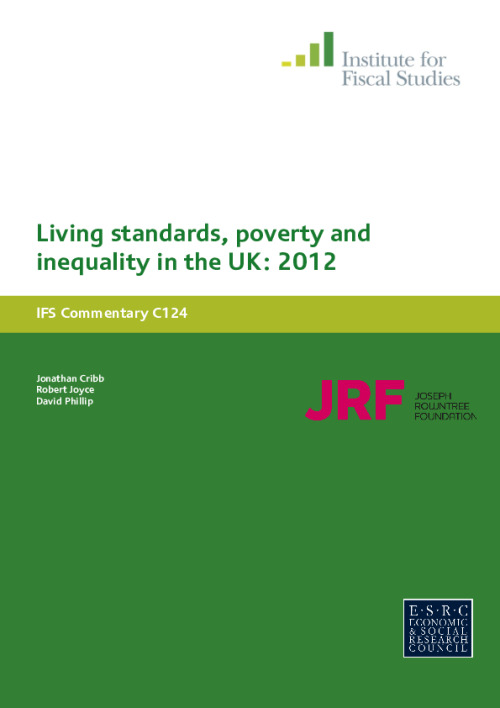How have household incomes evolved since the onset of the financial crisis? What is the gap between rich and poor? Who was hit hardest by the recession? How many people are there in poverty? Which groups are most likely to face poverty? These questions are fundamental to understanding the living standards available to individuals across the UK.
Each year, the government produces statistics about the distribution of income in the UK ('Households Below Average Incomes' or HBAI). The data underlying the HBAI statistics have the potential to provide a wide range of information about poverty, inequality and average incomes. Ten years ago, IFS researchers began publishing an annual series of reports describing these statistics and the driving forces behind trends over time. Back in 2002, this showed a picture of robust year-on-year growth in living standards and falling levels of poverty, although inequality was continuing to creep up. Ten years on, the latest report for 2012 covers data up to and including 2010-11. The picture is strikingly different. In the aftermath of the recession, average incomes have fallen by near-record amounts. Inequality has fallen back to levels last seen in the mid-1990s. Relative poverty continues to fall, but only because the poverty line is also falling: the poor have undoubtedly been getting worse off in absolute terms, on average.
The main measure of income used in our analysis is household net income, which is then ‘equivalised’ to take account of differences in household size and composition. We measure each household’s total income from all sources (including earnings, self-employment, pensions, benefits and tax credits) minus council tax and any direct taxes paid on these sources. We then apply 'equivalence scales' to each household's income, accounting for the fact that (for example) a net income of £200 per week will mean a higher standard of living for a single individual than it will for a couple with four children (all else equal).
Click here to access data on living standards, poverty and inequality since 1961 and to view our other annual reports on the topic.











